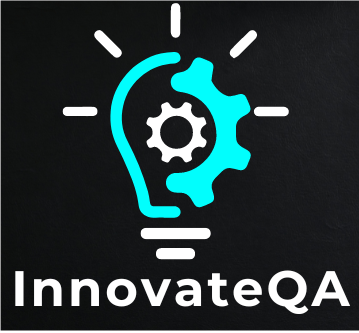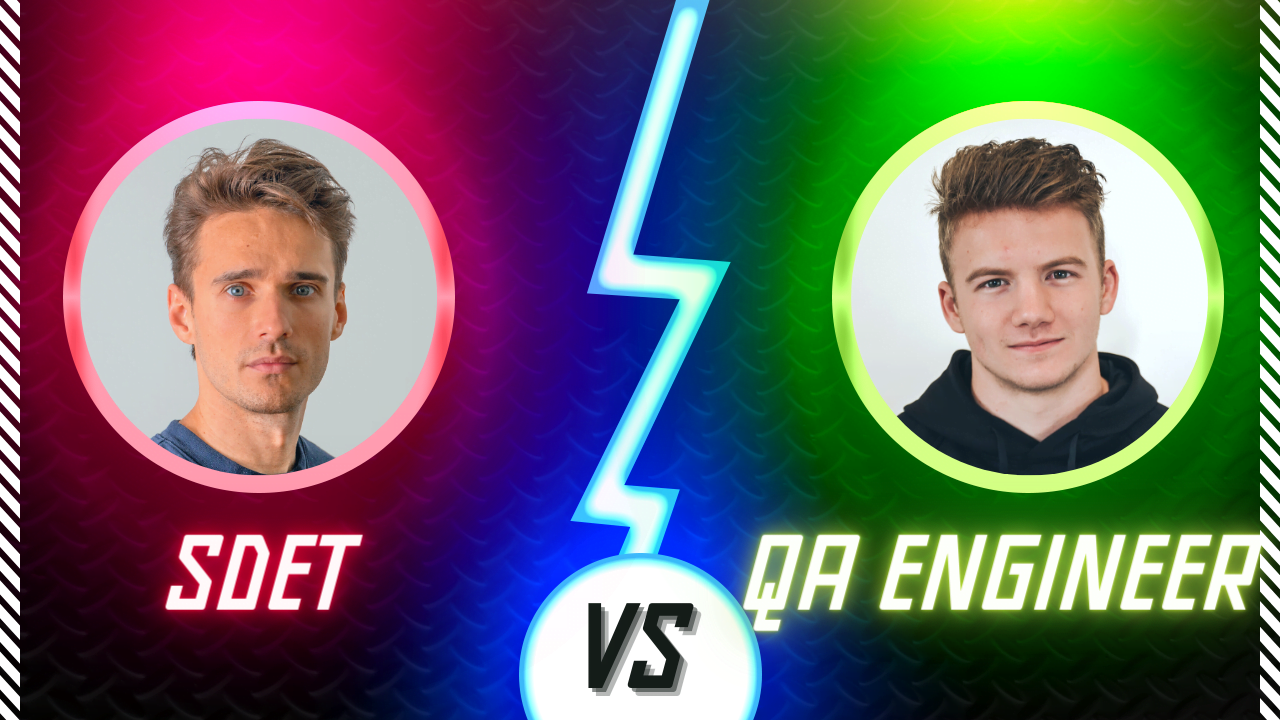Table of Contents
ToggleIntroduction
The roles and responsibilities of experts involved in the testing process are always changing in the dynamic field of software development. Software Development Engineers in Test (SDET) and Quality Assurance (QA) Engineers are two important players in this field. Although they both improve the overall quality of software, their jobs and skill sets are different. We will examine the subtle differences between QA engineers and SDETs in this post, highlighting how crucial it is to comprehend these differences in the ever-evolving IT sector.
🤵Defining SDET and QA Engineer Roles
Understanding the fundamental roles and responsibilities of QA engineers and SDETs is essential to understanding how they differ from one another. The main responsibility of a QA engineer is to test software programs for errors, flaws, and consistency issues. They are essential in making that the program satisfies the requirements and runs properly.
A Software Development Engineer in Test (SDET), on the other hand, blends the abilities of a software developer and a conventional QA engineer. In addition to creating and carrying out test cases, SDETs actively take part in the development process by creating code that automates testing processes. Because of their combined knowledge, SDETs are well-positioned to contribute at every stage of the software development lifecycle.
🤹Skill Sets: QA Engineers vs. SDETs
A crucial difference between SDETs and QA Engineers is their skill sets. QA engineers often have excellent testing and analytical abilities. They are proficient in doing manual testing and use a variety of testing approaches to make sure the functionality of the software meets business requirements. Automation is not the main focus of their work, but it may be one of their tools of choice.
On the other hand, SDETs offer a special combination of development and testing abilities. Skilled in programming and scripting languages, SDETs create frameworks for automated testing and leverage tools to optimize the testing process. This improves productivity while enabling continuous integration and delivery, which are essential features in today’s agile development settings.
🤖Automation: A Core Element of SDET Role
In software testing, automation is a buzzword, and SDETs excel in this field. These experts save time and effort on repeated testing activities by using their coding skills to develop automated test scripts. Automation ensures that important software features are fully tested while speeding the testing process and improving test coverage.
The software development process is made more reliable and efficient by SDETs who use their programming expertise to build scalable and reliable automated testing solutions. Differentiating themselves from QA Engineers by emphasizing automation, SDETs demonstrate how testing jobs have evolved in response to market expectations.
🤝Collaborative Approach: SDETs in Development Teams
Unlike conventional QA Engineers, SDETs are collaborative in nature. SDETs regularly collaborate with development teams, taking part in code reviews and providing testing-related insights. This collaborative strategy makes sure that testing is smoothly included into the development process, encouraging a quality-conscious culture from the beginning.
An indication of a paradigm shift in the way testing is viewed in modern software development is the inclusion of SDETs in development teams. SDETs actively participate in the development lifecycle, which helps produce reliable, superior software.
🏭Evolving Industry Trends and the Role of SDETs
Testing professionals’ expectations are evolving along with technology. The IT industry is moving toward continuous integration and DevOps, where development and operations work together seamlessly. Because of their capacity to operate in both the testing and development domains, SDETs are well-positioned for success in this dynamic environment.
SDETs play a crucial role in ensuring that testing procedures are in sync with the dynamic nature of software development, whether by the application of test-driven development (TDD) or through the integration of testing into the CI/CD pipeline.
🔍Comparison
Here’s a comparison between the two:
| SDET | QA Engineer | |
|---|---|---|
| Role | SDETs are developers with a focus on building tools and frameworks for testing. They are involved in both the development and testing aspects of the software. | QA Engineers primarily focus on ensuring the overall quality of the software product. They are responsible for testing the application to identify bugs, defects, and other issues. |
| Activities | SDETs write code to create and maintain automated test scripts, develop testing tools and frameworks, and collaborate with developers to ensure that the software is designed with testability in mind. | QA Engineers design test cases, execute them, and report defects. They may be involved in manual testing, automated testing, or a combination of both, depending on the project's requirements. |
| Skill Set | SDETs need strong programming skills, as they are responsible for creating automated tests and testing infrastructure. They often work with developers to integrate testing into the continuous integration/continuous deployment (CI/CD) pipeline. | QA Engineers need a good understanding of testing methodologies, test case design, and the ability to identify and report issues effectively. While automation skills can be beneficial, they may not be as deeply emphasized as in the SDET role. |
| Focus | SDETs aim to improve the efficiency and effectiveness of the testing process through automation. They contribute to building a robust and automated testing environment. | The primary focus of a QA Engineer is to ensure that the software meets the specified quality standards and requirements. |
| Collaboration | SDETs work closely with developers to integrate testing into the continuous integration/continuous deployment (CI/CD) pipeline, ensuring that tests are run automatically during the development process. | They collaborate closely with developers, product managers, and other stakeholders to understand requirements and report issues. |
| Coding Skills | SDETs are expected to have strong programming and scripting skills. They write code to automate testing processes, build testing tools, and develop frameworks for automated testing. They often use programming languages such as Java, Python, or C#. | While QA Engineers may have some scripting skills, their primary focus is often on manual testing. They create test cases, execute them, and report any issues they find. Their role may involve less emphasis on coding compared to SDETs. |
| Automation | Automation is a core aspect of the SDET role. SDETs design and implement automated test scripts to verify the functionality and performance of software. They contribute to the development of automated testing frameworks and tools. | QA Engineers may use automation tools for testing, but their role is not centered around creating and maintaining automated test scripts to the same extent as SDETs. |
🔁Overlap
While QA Engineers and SDETs have distinct focuses, there is often overlap between the two roles. For example:
- Some QA Engineers may also be involved in test automation, especially as the industry trends towards more automated testing processes.
- SDETs still need to understand quality assurance principles and may be involved in manual testing when necessary.
💁♀️Conclusion
In summary, while both SDET and QA Engineer roles involve testing software, the SDET role is more focused on integrating testing into the development process through automation and code-centric approaches, whereas the QA Engineer role may be more centered around manual testing and quality assurance processes. The specific responsibilities and requirements for each role can vary depending on the organization and the nature of the software being developed.The specific responsibilities can vary between companies, and some organizations may use the terms interchangeably.
👍You Might Also Like👇
🔝4️⃣5️⃣➕ Manual Testing Scenario Based Interview Questions 2024 🚀
🤖 🔝6️⃣5️⃣ ➕Automation Testing Interview Questions 2024 🚀
🔝6️⃣5️⃣➕ API Testing Interview Questions 2024 🚀
🔝6️⃣5️⃣➕ Postman Interview Questions 2024 🚀
🔝3️⃣0️⃣➕ Cucumber Interview Questions 2024 🚀
🔝5️⃣0️⃣➕ TestNG Interview Questions 2024 🚀
🤖🔝💯+Selenium Interview Questions For Experienced 2024 🚀
🍵Top 💯+ Java Interview Questions For Automation Testing 2024 🚀
🔝6️⃣5️⃣➕ JMeter Interview Questions 2024 🚀

